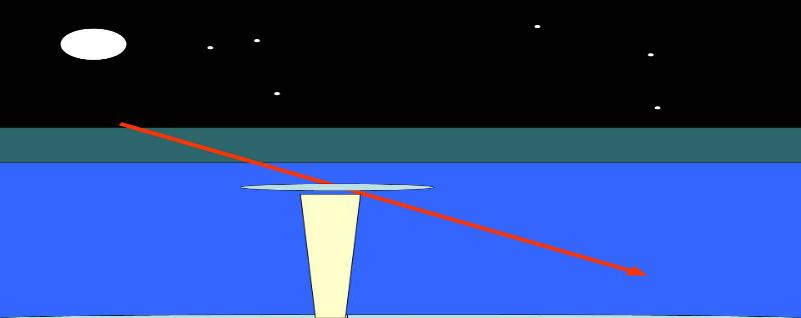INTRODUCTION
A new method is being developed and
patents are pending in the formation
of Cosmic Ignited Plasma Patterns
in the Atmosphere (CIPPA). The CIPPA
method uses cosmic particle
ionization trails to ignite breakdown within the
electric field
pattern, thus significantly reducing power requirements and
costs.
The ionized plasma pattern areas reflect a broad range of
radio/radar frequencies.
Military applications include quickly
deployable communication systems for
theater-wide operations, including
non line-of-sight UAV communications
and specialized
intelligence gathering.
Civilian applications include city-
wide and long-haul, high
quality multi-media communications. There are
also potential
weather applications, such as severe weather control.
The new CIPPA method
offers significant benefits compared to previous
concepts for formation
of artificial ionized regions in the atmosphere.
Previous
concepts use pulsed beams of electromagnetic radiation and
require high
electric fields for electrical breakdown in the atmosphere.
These
previous studies require peak power levels up to 1010 watts and
costs
in the hundreds of millions of dollars. Because of these extreme
power and cost requirements, artificial ionized regions have not been
created in the atmosphere using such systems. The CIPPA method takes
advantage of cosmic particle ionization trails (cosmic rays for
altitudes below
40,000 meters and meteor trails at altitudes over
70,000 meters), which
fundamentally change the physics of the breakdown
process by providing
an ignition source of electrons. The net
result of the CIPPA method
Projections indicate this breakthrough for
CIPPA could reduce the cost of a
system to a few million dollars and
reduce the power requirements to less
than a megawatt in some cases and
significantly below prior methods in
other cases. Moreover, the
CIPPA innovation could make it possible to
create ionized plasma
patterns in the atmosphere with low cost microwave
oven magnetrons used
as radiating elements of a phased array heater.
The lifetime of
individual radiating elements can be over 6,000 hours. The
lower
power levels also lead to a safe system; for example, an aircraft could
fly through the phased array beam pattern without harm. A patent
application regarding the method and apparatus for formation of artificial
ionized plasma patterns was filed on September 6, 2005 by Dr. Bernard
J.
Eastlund.
In the 1980ís, Dr. Eastlund was the author of
patents assigned to APTI for
applications of a large phased array
heater on the North Slope of Alaska for
ionospheric modification
(patent number 4,686,605). One of those
applications was the
creation of an artificial ionized layer with ECRH
heating. Dr.
Eastlund played a major role in developing the Artificial
Ionospheric
Mirror (AIM) proposal to AFRL in 1987 by APTI (then a wholly-
owned
subsidiary of ARCO). He is prepared to carry out a proof of concept
program for creation of plasma patterns in the atmosphere using cosmic
particle ionization trails.
A technical advisory group of
experts has been assembled for carrying out
the project. This
group includes Professors Victor Granatstein and
Gennady Milikh, both
of the University of Maryland, and Dr. Peter Koert, of
MIT.
Professor Milikh is one of the pioneers of analysis of artificial
ionization
layer research and is co-author of an important textbook on
the subject.
Prof. Granatstein is an expert on microwave power
technology and
microwave communications. Dr. Koert is an expert
on the modeling of
ionization layer formation and is the author of a
patent on tilting ionization
layers.

IONIZATION TRAIL
MICROWAVE
HEATER
BEAM
COSMIC IGNITED PLASMA
PATTERNS IN ATMOSPHERE
(CIPPA)
|
PLASMA MIRROR

